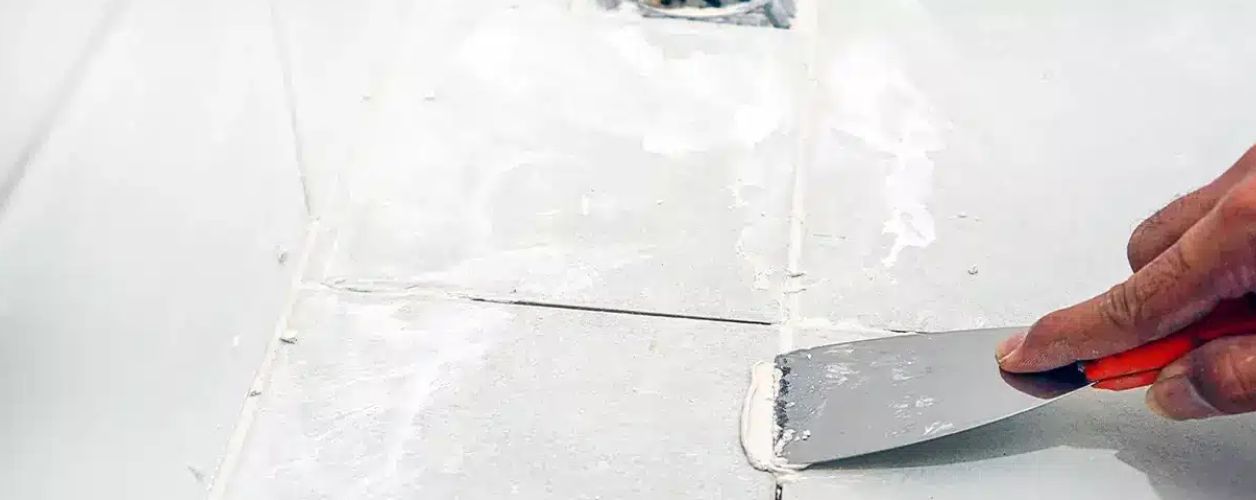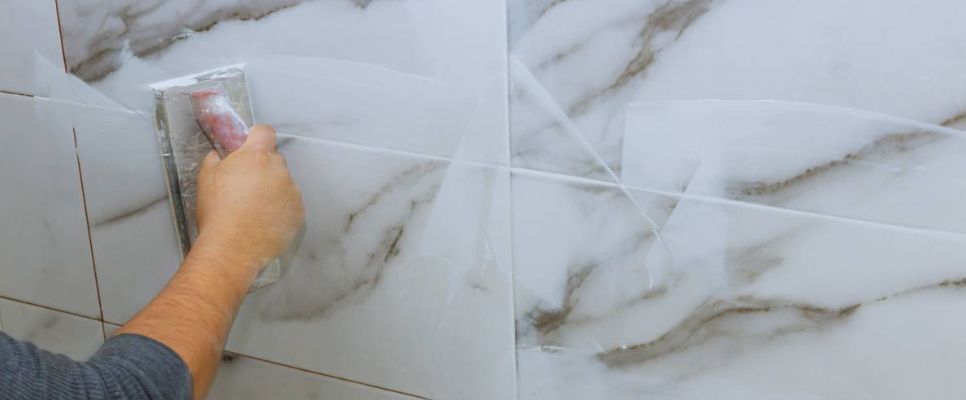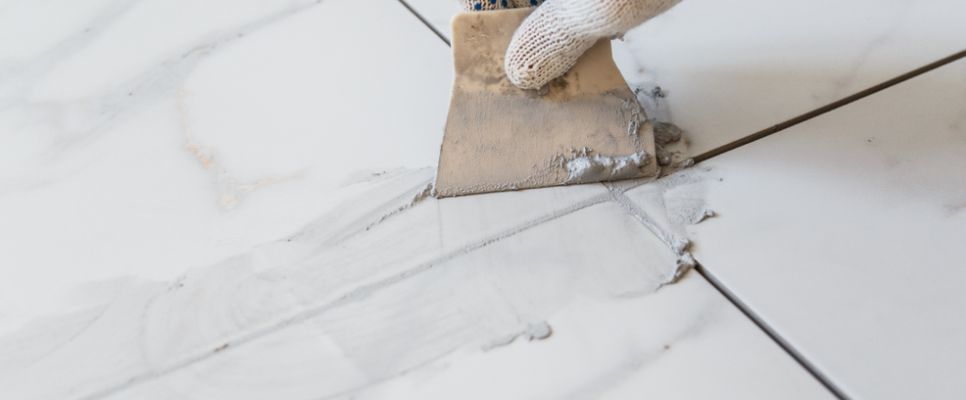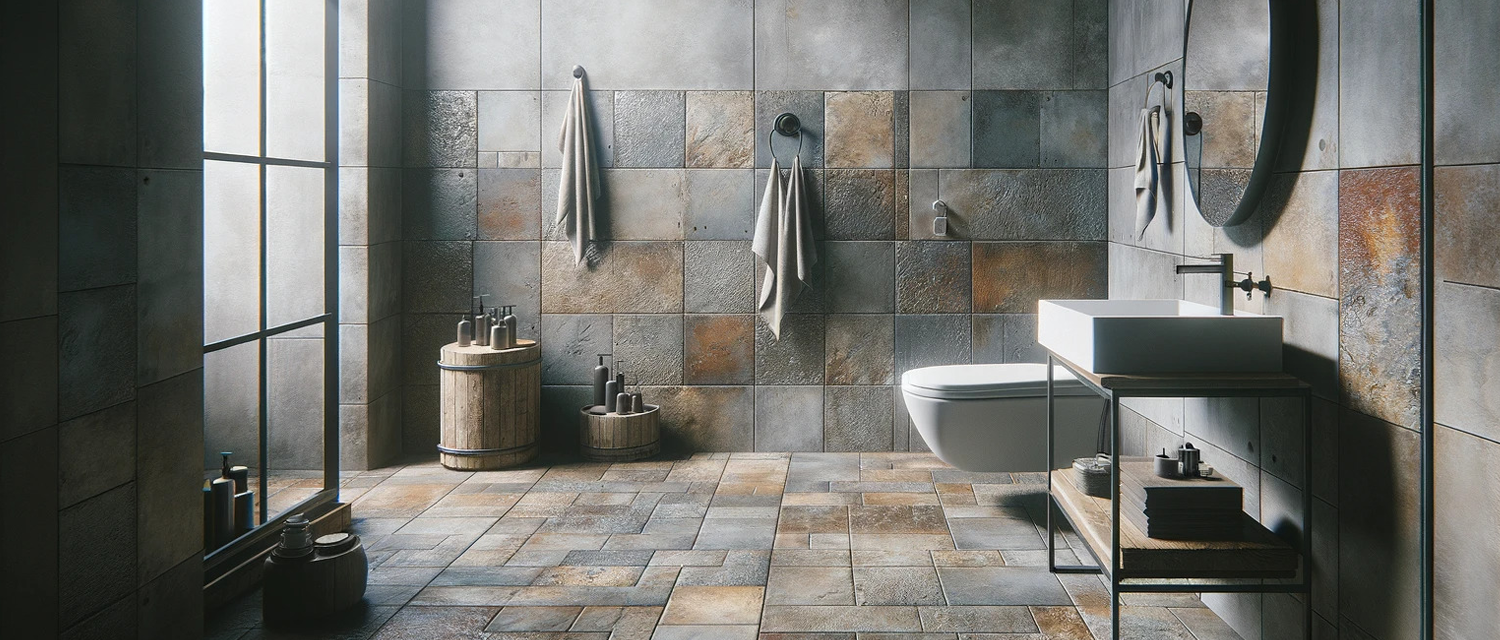How Much Does Regrouting Cost?
Average Regrouting Cost: $500 to $1000
Labour costs for regrouting in Australia typically range from $45 to $80 per hour, depending on region, experience, and job complexity. Alternatively, many professionals charge $25 to $50 per m², based on the tile area and grout removal effort required.

Table Of Content
- Introduction
- What is Regrouting?
- Average Cost of Regrouting in Australia
- Types of Grout and Material Costs
- Cost By Room Type And Area
- Additional Costs With Regrouting Services
- Factors Influencing Regrouting Costs in Australia
- DIY Regrouting Costs in Australia
- Pros and Cons of DIY Regrouting
- Professional Regrouting: What’s Included?
- Regrouting vs. Retiling: A Cost Comparison
- Cost-Saving Tips
- Conclusion
How Much Does Regrouting Cost? Tile Area Grouting Cost Explained
Regrouting plays an essential role in keeping tiles protected because this maintenance process dramatically improves tile visual appeal and service duration for bathroom areas, kitchen spaces and floors covered in tiles. How Much Does Regrouting Cost? This complete guide details all the essential information you require about tile regrouting regarding costs and influencing factors, alongside professional versus do-it-yourself expenses.
What is Regrouting?
The process of removing worn-out or discoloured grout between tiles enables fresh grout installation. The process stands as a suitable option for house owners who need tiled area updates without buying new tiles. The process of regrouting benefits not only the appearance but also stops water damage, mold growth and tile slippage.
Why Regrouting is Important
The appearance of tiled surfaces depends greatly on the process of regrouting because it impacts both cleanliness and surface durability as well as their visual appeal. Here’s why it matters:
- Aesthetic Improvement
The appearance of tile surfaces declines as aging grout develops stains while turning white areas into ugly discolorations and breaking into cracks. Through regrouting, your space will gain a new, fresh appearance because floors, walls and countertops will appear mighty bright like new ones. - Mould and Mildew Prevention
Old grout in bathroom and kitchen areas absorbs water from damp conditions, which creates conditions for mould development and mildew growth. Regrouting fixes deteriorated areas to create a healthier environment since it establishes a barrier that blocks both moisture and bacterial growth. - Structural Integrity
The function of grout extends beyond decoration because it maintains tiles within their position. The absence or decay of grout material causes tiles to become unstable, which eventually results in cracks while creating additional damage. The regrouting process strengthens the tile foundation and thus avoids future significant maintenance expenses. - Cost-Effective Maintenance
The process of regrouting tiles costs much less than tile replacement because it avoids both labour costs and replacement expenses. The service delivers an affordable method to keep tiled surfaces in good condition rather than requiring complete renovations.

Average Cost of Regrouting in Australia
Australian residents need to understand that regrouting expenses differ substantially based on space dimensions and tile types, as well as the choice between professional help or DIY. The cost of refreshment through regrouting represents a reasonable investment, yet understanding expected pricing allows budget planning.
General Price Range
Professional tilers offering regrouting services in Australia will charge between $25 and $60 per square metre, depending on tile condition and area complexity. The cost incorporates workforce, equipment and basic supplies such as sealant together with material. The usual expenses for regrouting work in different areas follow this price range:
- Small bathroom: $400 to $800
- Large bathroom: $800 to $1,500
- Shower stall: $250 to $700
- Kitchen splashback: $150 to $500
The removal of heavily stained and damaged old grout increases labour costs because it takes additional time to perform.
What’s Included in the Cost?
The average cost usually covers:
- Grout removal and replacement
- Basic cleaning of the tile surface
- Application of new grout and sealant
- Labour and standard tools
The price increases when employment tasks include deep tile cleaning alongside mould treatment and waterproof membrane application.
Labour Cost For Regrouting In Australia
| Category | Detail | Estimated Cost (AUD) |
|---|---|---|
| Labour Cost (Per Hour) | Varies by region, experience, and project complexity | $45 – $80/hour |
| Labour Cost (Per m²) | Based on the tile area and grout removal effort | $25 – $50 per m² |
Types of Grout and Material Costs
| Grout Type | Application | Cost (Material Only) |
|---|---|---|
| Cement-Based Grout | Standard tiles, basic interior jobs | $5 – $10 per kg |
| Epoxy Grout | Wet areas (bathrooms), high durability | $15 – $25 per kg |
| Sanded Grout | Wider joints (3 mm+) | $10 – $20 per kg |
| Unsanded Grout | Thin joints (<3mm) | $8 – $15 per kg |
| Pre-Mixed Grout | Small DIY jobs | $20 – $40 per tub (1–2kg) |
Cost By Room Type And Area
| Room Type | Typical Area | Total Regrouting Cost Range (AUD) |
|---|---|---|
| Small Bathroom | 4–6 m² | $250 – $600 |
| Standard Kitchen Splashback | 2–3 m² | $100 – $300 |
| Full Kitchen Floor | 8–12 m² | $400 – $900 |
| Shower Area (Walls + Floor) | 5–8 m² | $350 – $800 |
Additional Costs With Regrouting Services
| Service | Details | Estimated Cost |
|---|---|---|
| Old Grout Removal | Manual or mechanical removal | $10 – $25 per m² |
| Tile Cleaning Before Regrouting | High-pressure or chemical cleaning | $5 – $15 per m² |
| Sealing (Post-Regrouting) | Helps protect grout from moisture/stains | $5 – $10 per m² |
| Crack Repair in Grout Lines | Localised touch-ups before regrouting | $50 – $150 (per job) |
| Regrouting Showers Only | Niche job-specific cost | $300 – $600 (complete shower) |
| Silicone Replacement | Around edges/joints | $10 – $25 per linear metre |
| Tile Replacement Services | Replace discoloured or cracked tiles | $25-$50 for each tile |
| Mould Treatment | Depending on severity | $50–$200 |
| Shower regrouting with waterproofing | A highly durable regrouting | $400–$1,200 |
Factors Influencing Regrouting Costs in Australia
Tiled surfaces benefit both in appearance and hygiene, and water resistance when homeowners choose regrouting because it refreshes their look. The total regrouting costs exhibit wide variation according to multiple variables. Insight into price-influencing aspects will allow you to make better choices and limit price surprises.
Size of the Area
The total size of the tiled surface represents the main obvious cost-determining element. The price increases proportionally with the area size because it requires greater amounts of grout replacement. Bigger tiled areas demand more materials along with additional labour, which raises the total expense. The price of regrouting a shower stall becomes much lower than regrouting both bathroom walls and floor together.
Type of Grout Used
The selection of grout depends on multiple factors, such as installation spots and tile area functionality and the tile gap dimensions. The price of grouting projects depends significantly on the choice of grout materials.
- Cement-based grout: The customary budget-friendly solution for dry applications consists of cement-based grout, which works well for kitchen splashbacks together with feature walls.
- Epoxy grout: Epoxy grout provides durable water-resistant chemical and stain protection, which fits best in shower areas. Its superior properties make epoxy grout difficult to handle while also raising total expenses.
- Sanded vs. Unsanded grout: When deciding between sanded and unsanded grout, the wider tile joints require sanded grout, but it has a slightly higher price than using unsanded grout for tight tile junctions.
Tile Material and Spacing
Regular porcelain tiles, along with ceramic tiles, remain less expensive to regrout than upscale, delicate tile materials. The average price depends largely on the tile material alongside its installation pattern.
- Narrow grout lines: Tiles with spaces narrower than average need extremely precise regrouting work that raises both the expense and duration of labor.
- Tile material: The removal of grout requires cautious treatment of tiles that include natural stone, marble or travertine since they pose challenges to handling during the process.
Condition of the Existing Grout
The existing grout condition determines how much cost will be involved. Easy and quick grout removal might be possible for discolored cases. However, if it’s:
- Cracked
- Crumbling
- Heavily stained
- Mouldy or mildewed
Difficulty during removal increases when the current condition of the tiles and grout becomes more complex. The total expense can become substantially more expensive when tile cleaning, minor repairs, as well as waterproofing requirements need to be performed before new grout installation.
Accessibility
A tiled area that allows simple access during work depends on its cost estimation. Access to difficult areas such as toilet backwalls or narrow corners and vertical shower walls will lengthen the amount of time required for professional maintenance. Special tools and functional ladders create longer work durations because professionals need to use them for elevated sections. The job requires fixtures and fittings to be taken out for a period during proper execution.
DIY Regrouting Costs in Australia
Homeowners who handle home projects and have enough time and attention to detail can effectively reduce costs by doing their regrouting task. Through personal work, you can eliminate most of the costs associated with labour, even though the process needs careful attention. People need to grasp the entire scope, including the expenses and hurdles of the project.
- Estimated Cost of DIY Regrouting
The typical expenses for performing DIY regrouting on small areas such as kitchen splashbacks or shower walls fall into these categories: - Grout saw or multi-tool: $20 – $100
The price of manual grout saws remains lower than oscillating multi-tools, but their time-saving abilities compensate for their cost difference. - Grout material: $10 – $40 per kg
Heavily used cement-based grout remains an affordable grouting option that can easily be purchased from hardware stores. DIY users pay more for epoxy grout and experience more difficulty during application. - Grout float: $10 – $25
The grout float functions as an implement for avoiding grout fingertips while maintaining even joint distribution. - Sponge and bucket: $5 – $15
A sponge union with a bucket serves as the necessary tool combination for tile clean-up and grout residue elimination. - Sealant (optional but recommended): $15 – $40
The purchase of a sealant becomes necessary to defend grout from moisture while also fighting stains and mildew, specifically in environments with high moisture levels.
The total DIY expense for regrouting must cover $60 – $220 for materials, while failing to include labour costs. The estimated cost includes all fundamental tools together with supplies for executing a small regrouting operation. Additional supplies of grout along with sealant will be necessary for bigger regrouting projects.
Pros and Cons of DIY Regrouting
Pros:
- The estimated bill for self-performed work will cost less than what a professional would charge.
- Proprietors have the freedom to determine their working schedule.
- Learning a useful home improvement technique presents itself as an opportunity through this task.
Cons:
- Time-consuming and physically demanding
- Your attempts to regrout tiles can result in unsatisfactory results that include uneven lines and discolorations, and poorly sealed areas.
- Possibility of damaging tiles during grout removal
- No warranty or professional guarantee
Expertise in home improvement works becomes important to handle DIY regrouting properly because these tasks remain hard in regions that experience high traffic and significant moisture buildup.
Professional Regrouting: What’s Included?
Professional regrouting services deliver superior long-term finishes, especially for demanding locations such as showers and bathroom flooring, which justifies their higher cost. The standard service offered by professional regrouting companies consists of the following elements:
- A thorough evaluation of the tiled area comes first, followed by the protective covering setup for needed areas.
- Special tool technology helps professionals perform exact and safe removal of old grout materials.
- The process of surface cleaning checks for all dirt and both debris and mold on tiles.
- The professional-grade material application results in a smooth new grout application.
- The service applies grout sealant, which creates protection against moisture and staining when sealing is needed.
- Professional regrouting service providers stand by their work with warranties to protect their customers from subsequent damages like tile cracks, discolorations and leakages.

Regrouting vs. Retiling: A Cost Comparison
The decision to regrout or completely retile your tiled surfaces depends on how tired and discolored, or moldy, your tiles appear. The refreshment of tiled spaces in bathrooms, kitchens and laundry areas through regrouting or retiling leads to very unique expenses.
Cost of Regrouting:
When you need to refresh tile grout, you should remove old material with regrouting before the installation of new material. Such an inexpensive alternative to retiling offers enough benefits to recreate a tiled area's appearance and operational capabilities.
- Average cost: $25 to $60 per square metre
The process includes grout removal followed by surface cleaning, after which new grout is applied, and sealing treatments (if needed) complete the job.
The process of regrouting tiles stands out as the best option for areas that have intact tiles together with deteriorated or stained, or split grouting material. This application serves both fast results and low invasiveness, so people commonly use it for short bathroom and kitchen renovations.
Cost of Retiling:
The procedure of retiling requires the complete elimination of existing tiles before installing fresh ones. The operation demands considerable expense since waterproofing needs and surface corrections in addition to structural improvements.
- Average cost: $80 to $200+ per square metre
All work includes the removal of tiles, surface preparation, installation of new tiles and the application of grout and waterproofing treatments for wet areas.
The expense of tile work ranges from a broad spectrum based on tile dimensions and shapes, as well as labour rates and work complexity levels.
Cost-Saving Tips
- Rehire multiple repair areas simultaneously because it will reduce the total bill through bundled costs.
- Local contractors usually provide more affordable rates to customers who book services outside of peak booking seasons.
- You may tackle the grout removal independently before hiring someone else for the rest of the project.
- Choose standard grout products since premium or designer grout types do not provide the necessary benefits.
Conclusion
Tiled areas can be renewed through regrouting, which offers better results than a standard renovation at a reduced budget. The costs of regrouting in Australia depend on various factors, yet you can find affordable options when planning properly for your needs. The regrouting process through professional work or DIY efforts enables you to maintain tiles both attractive and operational.
Costs of various services and materials in this cost guide should be taken as estimates. These depend on location, preference and demands in the market.


![How Much Do Kitchen Tiles Cost? [2025]](https://servicetasker.com.au/storage/2024/04/1714452206.jpg)
![How Much Does a Tiler Cost? [2025]](https://servicetasker.com.au/storage/2024/02/1707457622.jpg)




